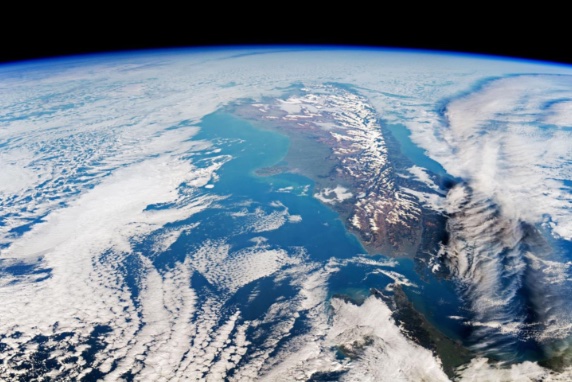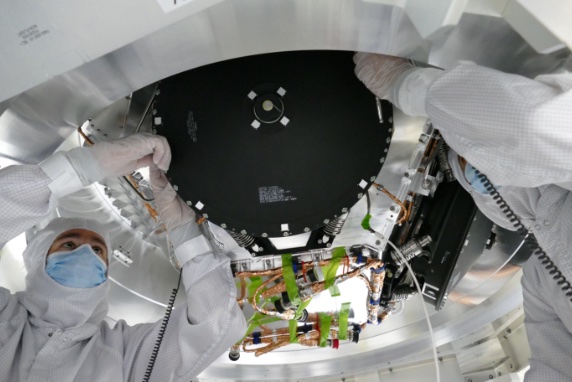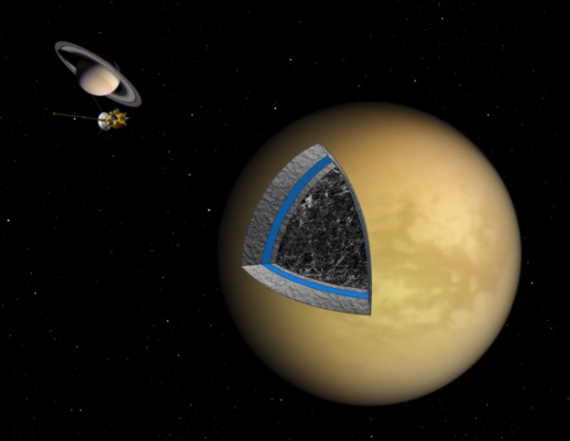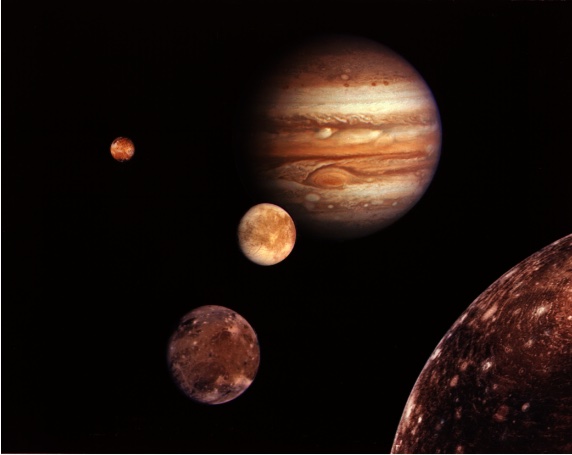While the scientific debate about the origin of water on our planet remains open, the truth is that relative to its size, Earth is more like a desert compared to other celestial bodies in our cosmic neighbourhood. Estimates vary, but there could be as much as 50 times more liquid water in the solar system than is found on Earth—an astonishing revelation that would have sounded absurd just a few decades ago. And scientists are eager to send spacecraft to this extraterrestrial water in the hope of discovering conditions suitable for life.

Apart from Earth, the inner solar system—containing the four planets closest to the Sun—is largely devoid of liquid water. On Mercury and Venus liquid water simply boils away, while on Mars any liquid water would quickly freeze or evaporate due to the low atmospheric pressure and temperature. Although there is some intriguing evidence that liquid water may exist beneath the Martian southern polar ice cap, the amounts would be very small compared to those found on Earth.
Paradoxically, to find to find an unexpected abundance of liquid water, we must venture into the frigid depths of the outer solar system, far from the warmth of the Sun. There, deep beneath the frozen surfaces of moons orbiting the gas giants Jupiter, Saturn, Uranus and Neptune, scientists have found strong evidence of vast oceans. But how can water remain liquid in such an extremely cold environment, where the Sun is only a faint glow in the sky and the warmest surface temperatures are always well below zero?
GATHERING THE WATERY EVIDENCE
Over the past few decades, data gathered from the Hubble telescope, the Voyager spacecraft, the Galileo and Juno missions to Jupiter, the Cassini-Huygens mission to Saturn, and the New Horizon mission to Pluto have all pointed to the existence of vast oceans of liquid water. Steve Vance, a planetary scientist at NASA, has been following these discoveries and has ranked the ocean worlds in the solar system according to how much liquid water they are thought to contain. Ranked from most liquid water to least: Ganymede (moon of Jupiter), Titan (moon of Saturn), Callisto (Jupiter), Europa (Jupiter), Earth, Pluto (dwarf planet), Dione (Saturn), Triton (Neptune) and Enceladus (Saturn). Some researchers have also argued for the presence of subsurface oceans on the moons of Uranus, as well as Mimas (Saturn) and Ceres (dwarf planet between Mars and Jupiter).

The top four on the list—Ganymede, Titan, Callisto and Europa—are each thought to contain more water than all Earth’s oceans combined. In the case of Ganymede, the most massive moon in the solar system, a staggering 69% of its total volume may be liquid water, which is 33 times the total on Earth. Even the dwarf planet Pluto, just two-thirds the size of our Moon, is estimated to contain almost as much liquid water as Earth, and considerably more if ice is included.
There are a number of clues that point to the presence of subsurface oceans on these frozen worlds. These include a smooth, largely craterless surface (Europa, Enceladus and Ganymede), the presence of geysers that eject plumes of water vapour and ice particles deep into space (Europa and Enceladus), an orbital wobble caused by ocean sloshing (Mimas), gravitational field anomalies (Dione), the presence of an induced magnetic field (Callisto and Europa), surface deformation caused by tidal gravitational forces (Titan), and surface ripples (Pluto).
REFUSING TO FREEZE
How can these oceans stay liquid or slushy despite the intense cold? First, the high salt and mineral content of the water, as well as the presence of ammonia, lowers its freezing point, much as seawater freezes at -2°C rather than 0°C. For example, Titan’s subsurface ocean could be as salty as the Dead Sea in Israel and Jordan, which freezes at -21.1°C. In addition, the extreme pressure at the depths where these oceans are found, tens or hundreds of kilometres below the surface, causes ice to melt through a process called regelation, discovered by Michael Faraday. Heat can also be produced by the decay of radioactive elements deep in the core (radiogenic heating), and there may also be residual heat left over from the original formation of the celestial body, known as a hot start, as is thought to be the case with Pluto’s ocean. Finally, and most importantly, the immense gravitational pull of the giant planets stretches and compresses these icy worlds in their elliptical orbits, generating friction and warming the interior in a process called tidal heating.

MISSIONS TO JUPITER’S ICY MOONS
Liquid water is crucial to supporting life on Earth, and for scientists interested in extraterrestrial life, it makes sense to focus on places in our solar system where there is evidence of liquid water. Two upcoming space missions will be launched to explore Jupiter’s three icy moons. The Jupiter Icy Moons Explorer (JUICE) is a European Space Agency (ESA) project scheduled to launch in April 2023 and reach Jupiter in 2031. JUICE will make flybys of Ganymede, Callisto, and Europa before entering orbit around Ganymede in 2034, becoming the first spacecraft to orbit a moon other than Earth’s. Although JUICE is not equipped to detect life, its mission is to determine whether conditions exist on Jupiter’s moons that could support life, such as water, biological essential elements, energy, and stability.
Not to be outdone, NASA’s Europa Clipper has a planned launch date of October 2024 and is scheduled to arrive at Jupiter in April 2030, ahead of ESA’s JUICE. Europa Clipper will carry out detailed reconnaissance of Europa and investigate whether the moon has conditions suitable for life.

While neither JUICE nor Europa Clipper will land on these moons, scientists have already begun conceptualising and designing advanced technology that could one day breach their frozen crusts and plunge into the mysterious ocean depths hidden beneath in search of alien life.
Comments on this publication